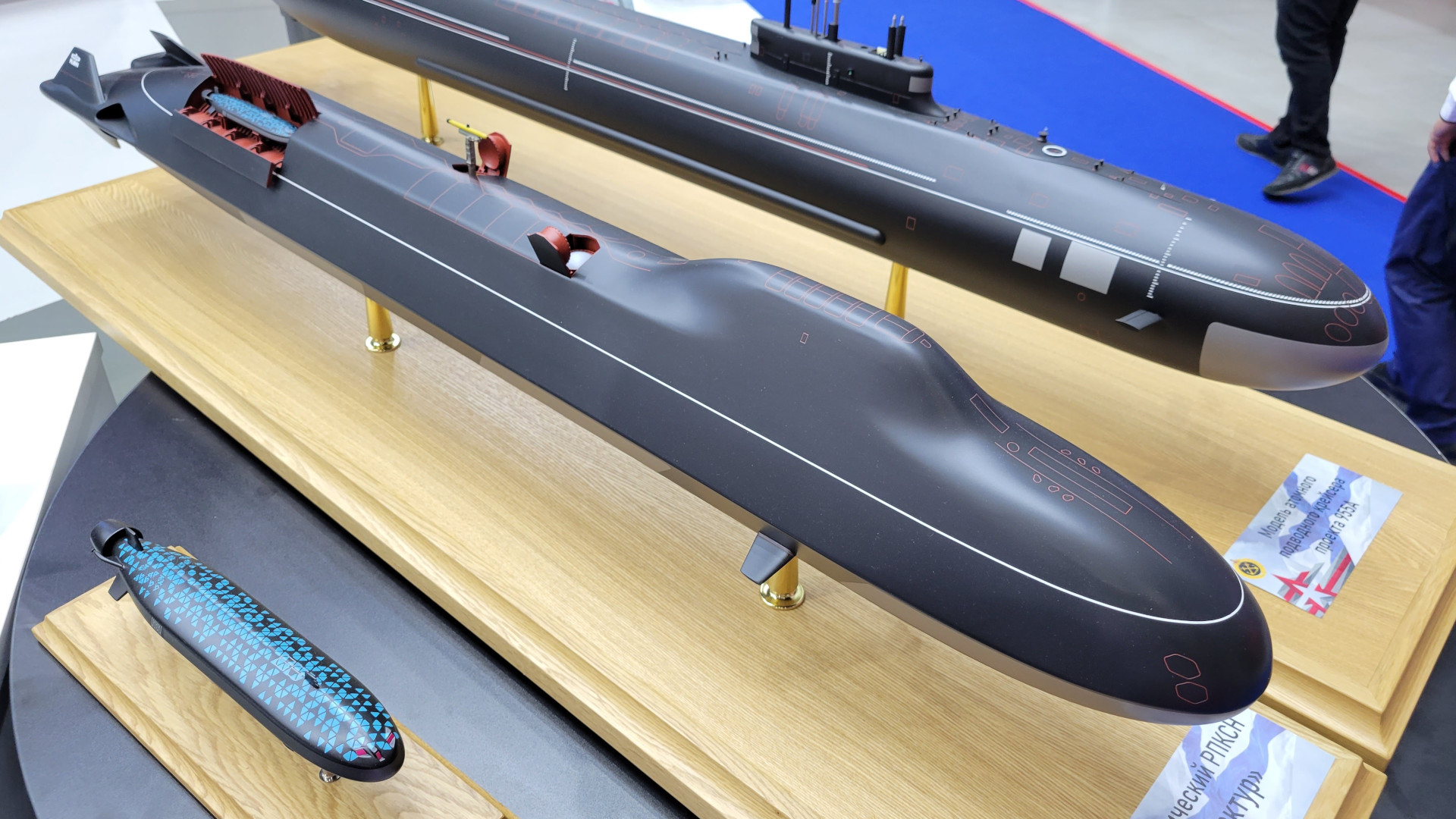A model of what appears to be a new sleek-looking submarine concept has appeared on display as part of the Army 2022 exhibition in Russia. The design, known as Arktur, is seen paired with a large-displacement unmanned underwater vehicle called Surrogat-V in pictures from the trade show floor.
@MuxelAero took pictures of the Arktur and Surrogat-V models, among others, and was kind enough to share them with The War Zone. The Army 2022 show, the eighth iteration of this annual event, opened today at the Patriot Park in Kubinka just outside Moscow. The name Arktur appears to translate into English as Arcturus, which is the brightest star in the Boötes Constellation, while Surrogat-V is simply Surrogate-V.
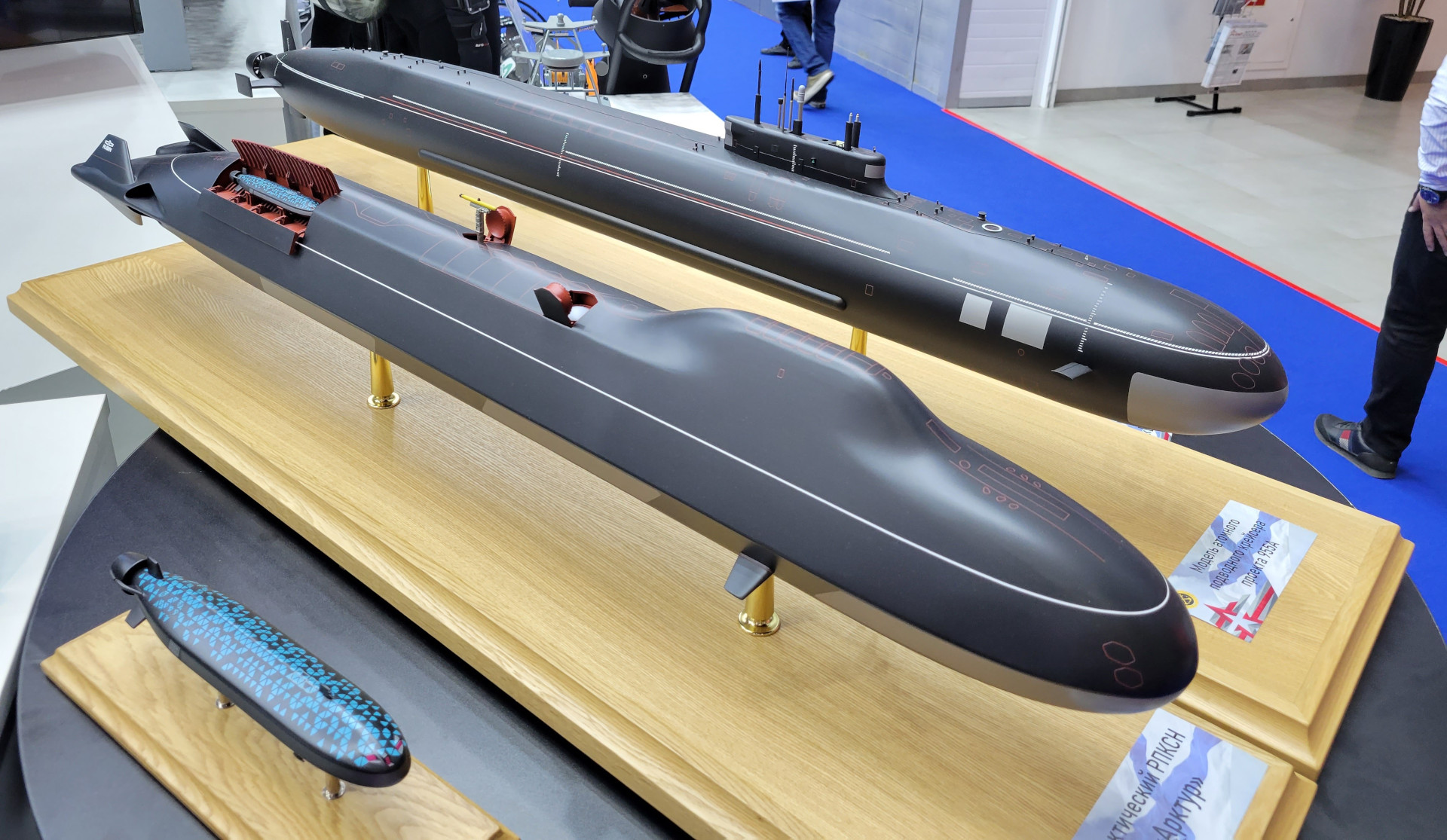
Details about Arktur are extremely limited, but a placard in front of the model appears to indicate that it is intended primarily to be a ballistic missile submarine, or SSBN, optimized for operation in the Arctic region. The model clearly shows a streamlined hullform with a low-profile sail.
If the model is of the same scale as the one of a Project 955A Borei-A ballistic missile submarine next to it, it’s possible that the two could have a very generally similar overall size and displacement. The Borei-A design is just under 558 feet long, is around 44 feet across at its widest, and displaces around 24,000 tons when submerged, according to publicly available data. Compared to the Borei series, however, Arktur has a squatter, fatter hull. Other countries, including the United States and Sweden, explored designs with broadly reminiscent shapes during the Cold War.
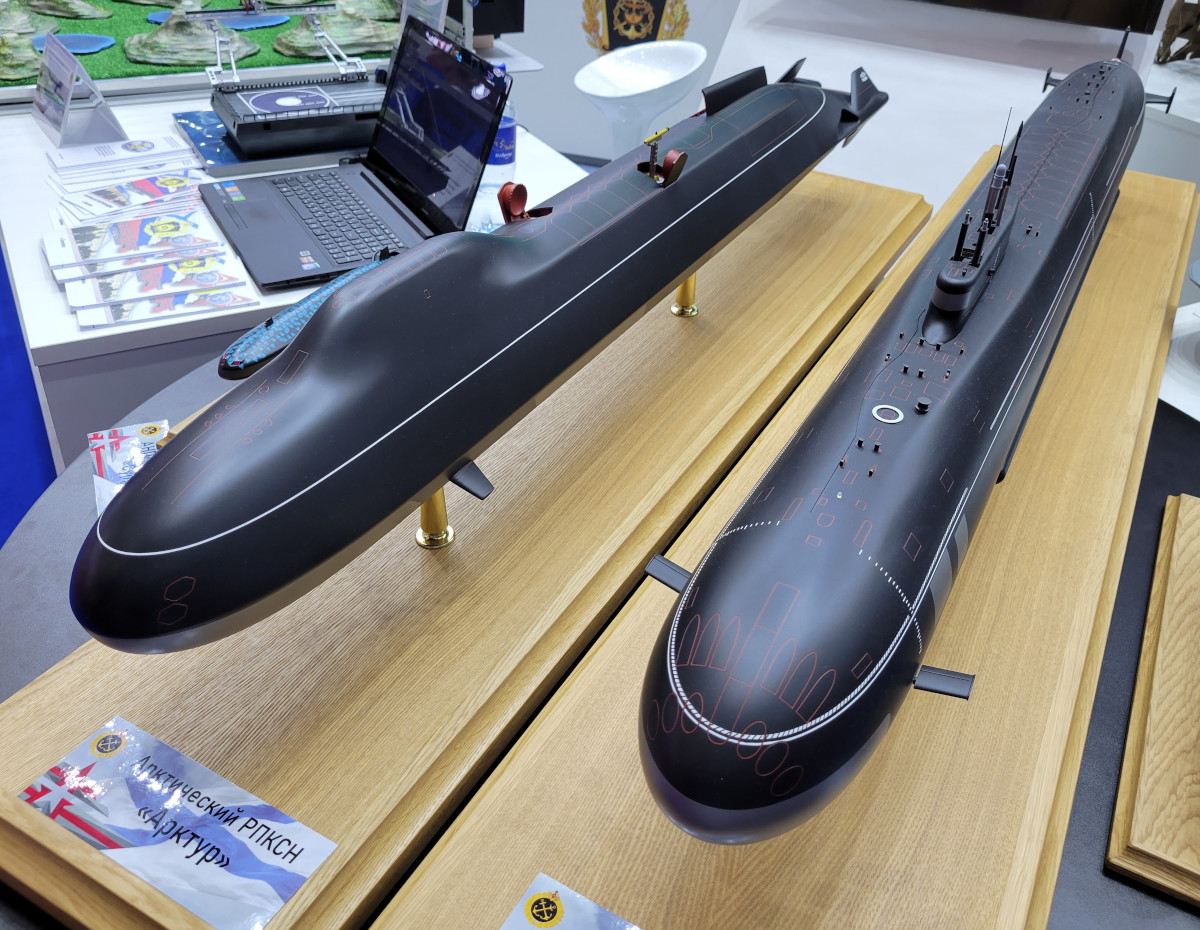
The Arktur appears to have a full shrouded propulsor arrangement of some kind, that looks designed for water to come in through four separate ducts on either side of the stern — on top and bottom — and then get pushed out through nozzle sections at the rear. Whether or not the design involves pump-jets concealed in the tail end of the submarine is unclear, though somewhat similar arrangements using pump-jets have been seen on other advanced submarine designs. Pump-jets are more efficient in some instances than typical propellers and can reduce a submarine’s acoustic signature – staying as silent as possible is key to any submarine’s survival – as you can read about more here.
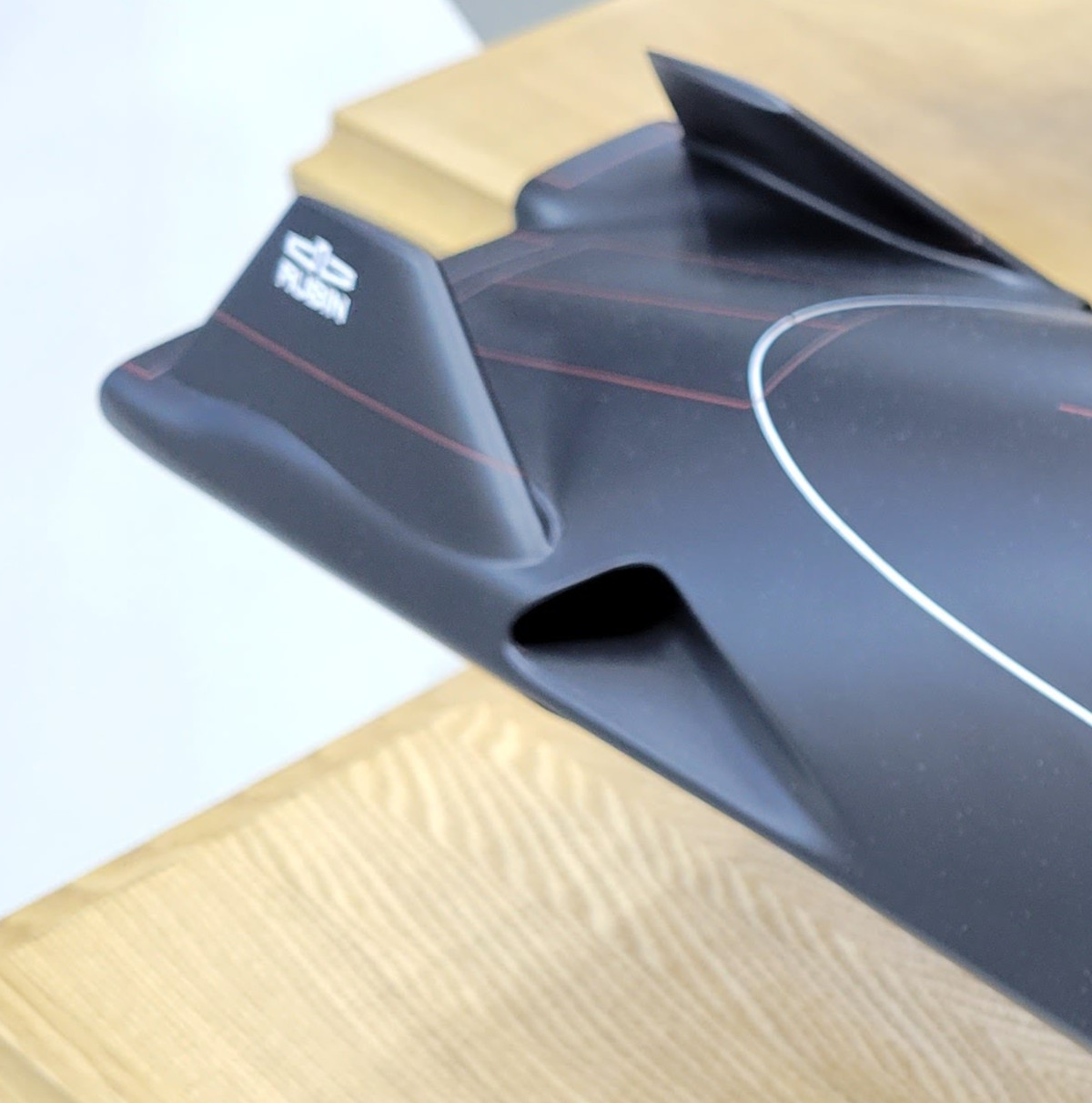
There’s no indication one way or the other that it has some kind of more novel propulsion system, like an all-electric configuration. It does evoke thoughts of the fictional magnetohydrodynamic “caterpillar” drive from the famous Tom Clancy novel The Hunt For Red October and the film of the same name.
Instead of a more traditional cross or X-shaped rudder and tail fin arrangement, Arkyur has two sets of inward canted vertical tailfins above and below either side of the tail section, too.
In terms of Arktur’s apparent capabilities, though described as an SSBN concept, the most immediately visually grabbing elements are the two large side-opening payload bays towards the stern, one of which is depicted on the model as containing a Surrogat-V.
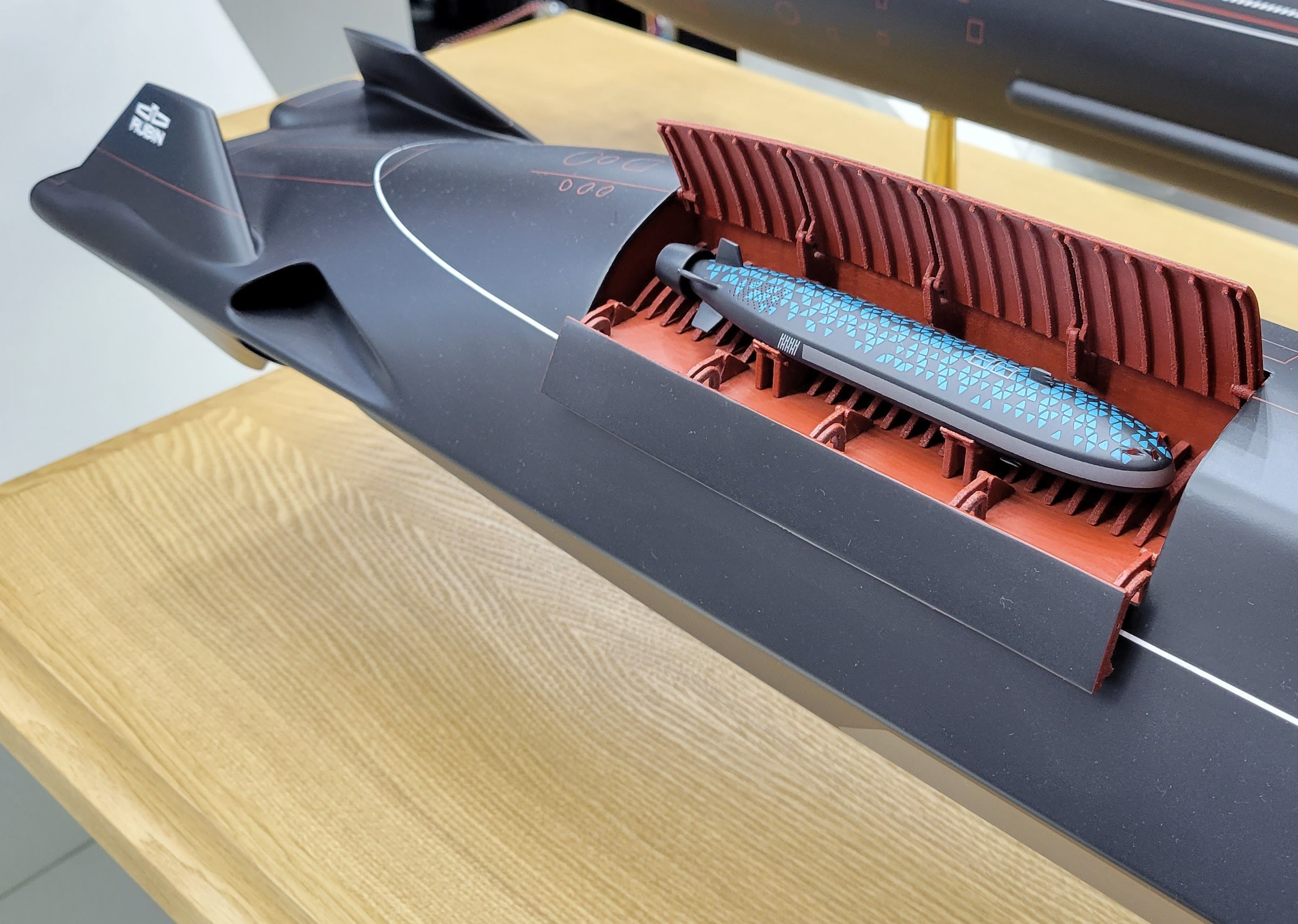
The UUV has a very low-profile design, as well, with what looks to be a single pump-jet propulsor at the rear. It also has a what may be a camouflage scheme of sorts, made up of tessellating blue triangles, on top of its hull. The pattern could make it more difficult to visually spot the drone submarine when it running at or close to the surface, especially in littoral areas. The UUV might need to operate at least near the surface from time to time for other reasons, including receiving new instructions, transmitting other data, deploying some kind of payload, and employing mast-mounted sensors.
As seen in the picture below, the stand-alone model of the Surrogat-V shows additional details, including red-painted flat panels at the front that could reflect sonars or other sensor systems used for navigation. More interestingly, it has dorsal and ventral fairings toward the bow end, each with multiple forward-facing protrusions of the kind that are often associated with secretive wake-detection systems. These systems are intended to intended to detect and track enemy submarines and other objects of interest by changes in water density left in their wake, rather than by their acoustic signature. You can read more about what is known about these capabilities, work on which the Russians inherited from the Soviets, in detail here.
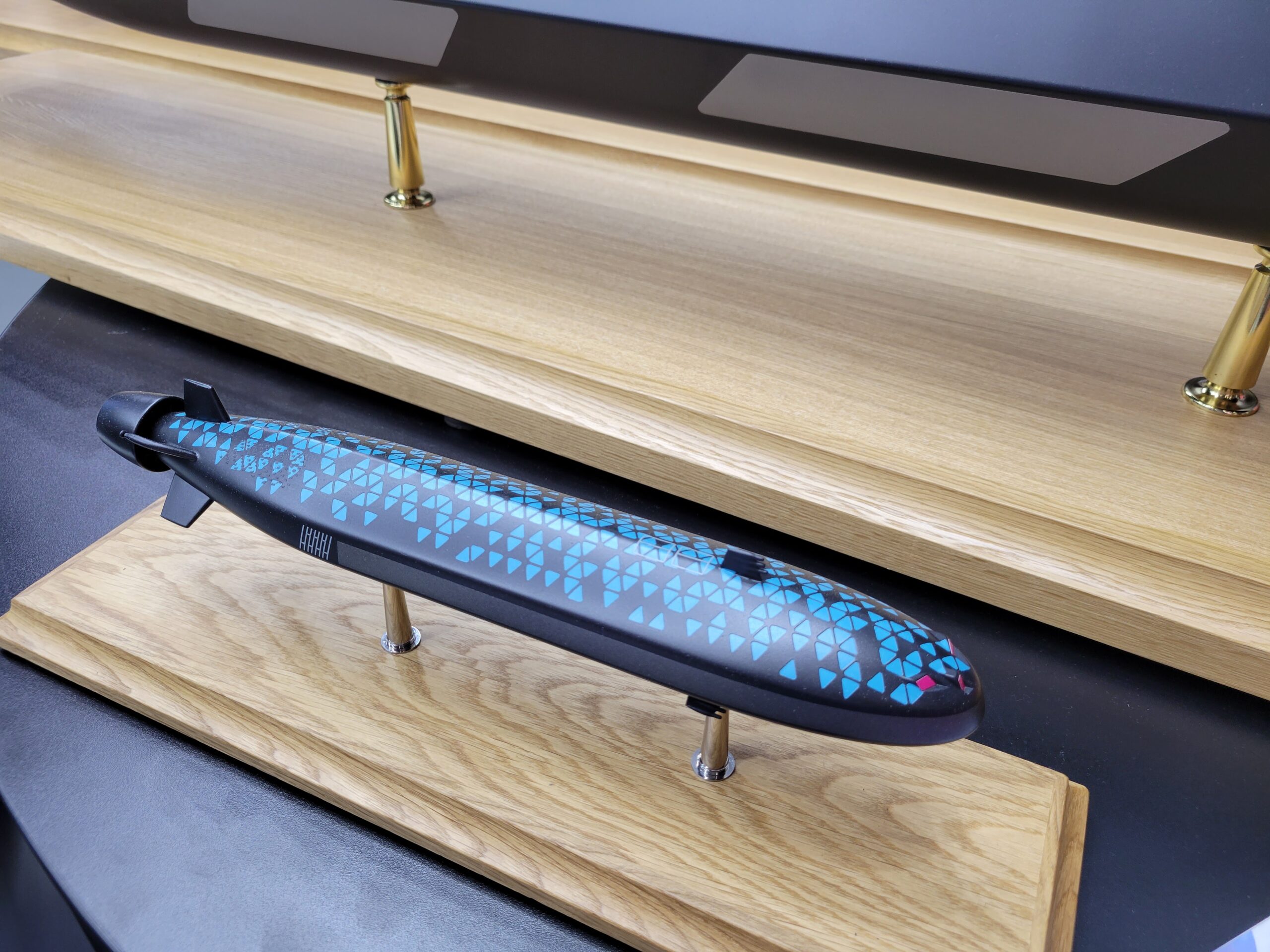
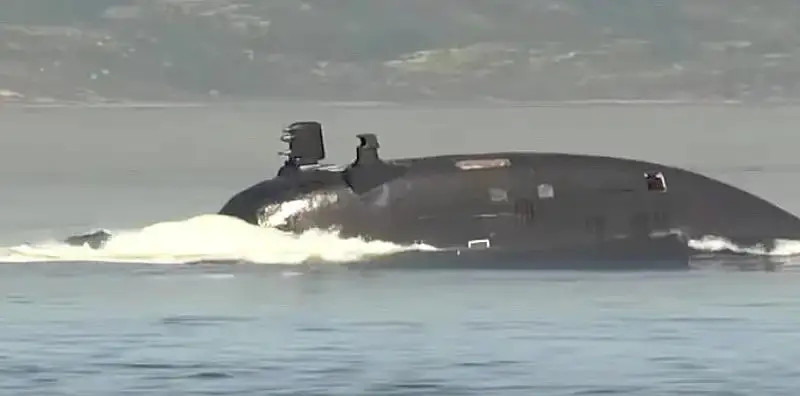
The Arktur model shows that the design has at least 12 large payload tubes along its rear hull. Two are depicted as open, one with a flat top cover that could reflect a vertically-launched missile of some type loaded inside, and another with an extended arm holding what looks to be a small torpedo-like UUV. The latter capability is very similar in general form and function to systems that were developed for the U.S. Navy’s four Ohio class SSBNs that were converted into guided missile submarines, or SSGNs, and that may now be in use on those highly-capable multi-mission boats, as you can read about in this past War Zone feature.
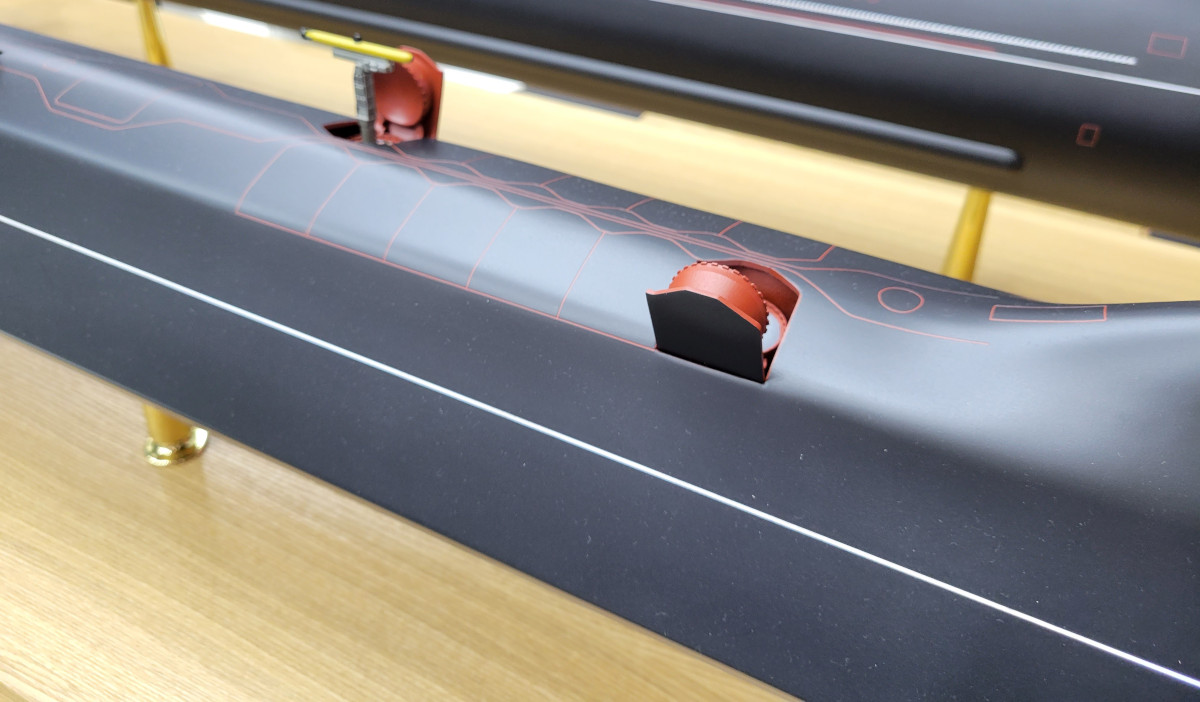
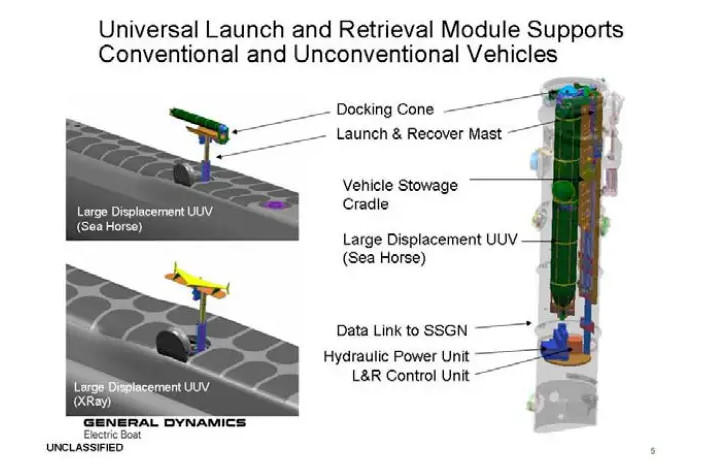
Arktur looks to have four torpedo tubes, two each on either side of its bow. There appears to be the outline of a large elongated hatch in the center top portion of the bow that is commonly found on Russian (and previously Soviet) submarines, and is typically associated with the loading of torpedos and other torpedo tube-launched payloads.
The outlines of an array of small hatches on top of the sail look most likely to be associated with full-retractable periscopes and other sensor masts.
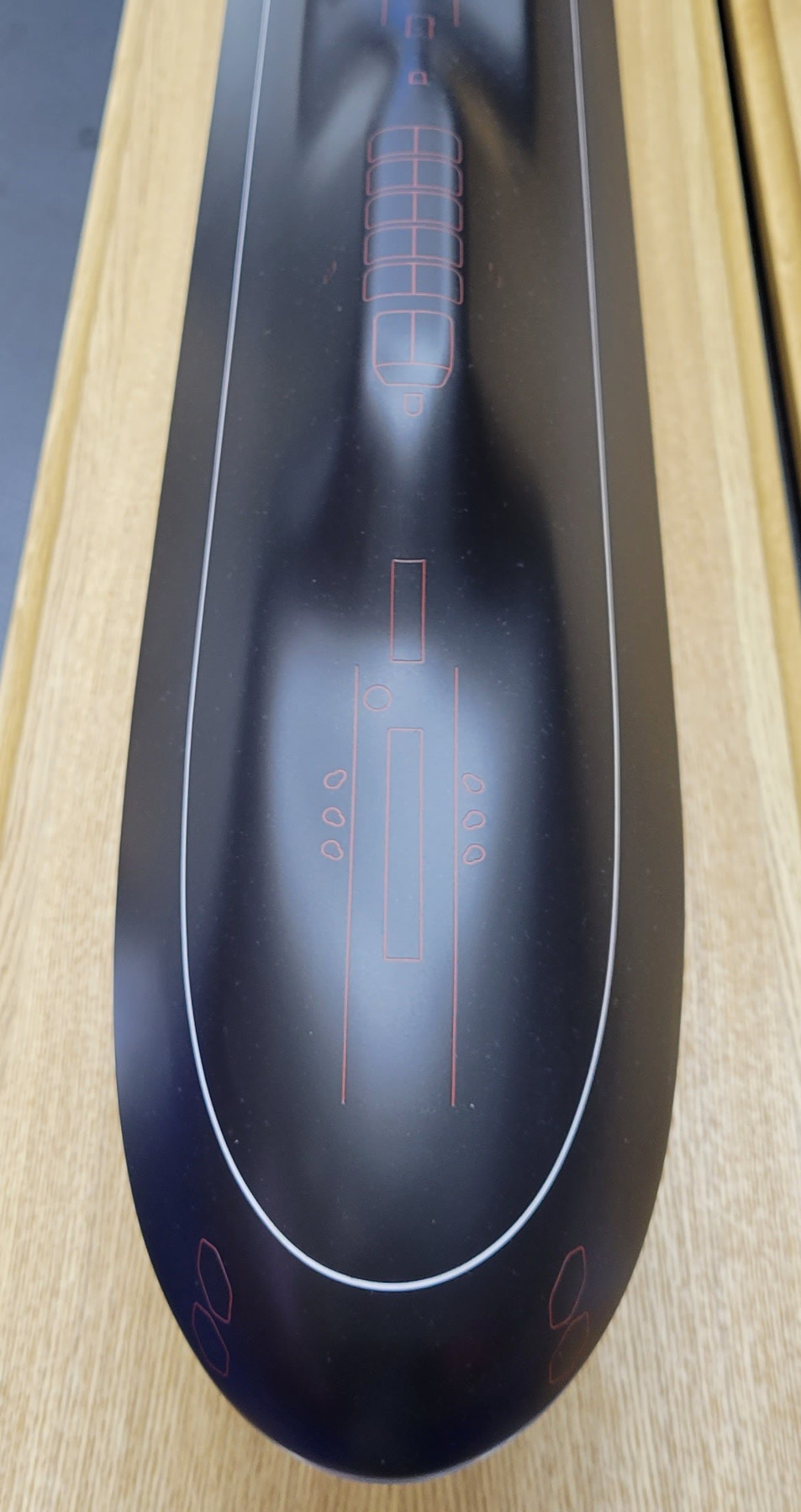
From what is visible on the model and what have by way of the official description, Arktur is a very interesting concept for a future SSBN, especially its potential ability to carry up to two Surrogat-V UUVs. While it’s not perfectly clear what the intended capabilities of those drone submarines might be, it’s not hard to imagine how they could be utilized as underwater ‘loyal wingmen’ of sorts to help protect the extremely high-value strategic asset they are launched and recovered from. With their own sensors, they could act as pickets to monitor for hostile enemy submarines while their mothership ‘drills a hole in the ocean,’ hiding to preserve its role as a second-strike deterrent. The unmanned underwater ‘surrogates’ might also be able to act as decoys on some level and be able to take direct action against any threats that might emerge.
Of course, given that Arktur and Surrogat-V both appear to be at least intended to be capable of very quiet operation, this pairing could potentially take on other missions, as well. A non-SSBN variant of the mothership might be able to discreetly move close to or even inside a target area and then use the drone submarines to carry out tasks ranging from intelligence-gathering to non-kinetic and kinetic attacks. Surrogat-Vs, or other smaller UUVs, could help scout out targets or other objects of interest, that could then be struck using weapons Arktur might have loaded aboard or by other Russian assets.
All told, from what is visible on the model, Arktur would seem to have the potential to be more than just an SSBN. From what we can see, the concept has some very general elements in common with the U.S. Navy’s Ohio SSGNs and, perhaps to a lesser extent, Russia’s massive Belgorod special mission boat, which is a highly-modified Type 949A Oscar II class SSGN and is currently the longest submarine in existence. Belgorod can launch Poseidon nuclear-powered and nuclear-armed ‘doomsday’ torpedoes, as well as act as a mothership for manned and unmanned mini-subs, among other reported capabilities.


It is well established that Russia is very active in acquiring large UUVs, including ones that could be launched from mothership submarines. This is not the first time the Russian government has talked about developing large Arctic-focused submarines, either.
Even before global climate change began to open up access to the Arctic in new ways, which has led to new geopolitical and economic competition and fears of conflict in the region, it had long been known as a playground for submarines and other underwater activity. For years now, Russia has had a similarly clear interest in expanding its above and below-water presence in the Arctic, to include the potential emplacement of undersea nuclear reactors and other new infrastructure on the seabed.
With all this in mind, it’s worth noting that Arktur has the logo of Russia’s Rubin Design Bureau on its vertical tail fins. Rubin is a prolific designer of submarines and other underwater vehicles, claiming in the past to have been responsible for 85 percent of all Soviet and Russian submarine development since 1901. Its portfolio certainly includes more conventional designs, such as the Borei-A.
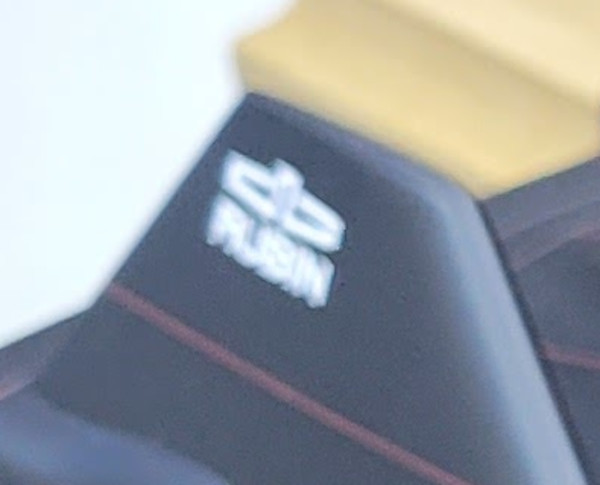
At the same time, it has been responsible for very advanced and niche work, including the Belgorod conversion, the Poseidon torpedo, the secretive Losharik deep-diving espionage-focused mini-sub, and the development of a host of specialized UUVs. On the same table as the Arktur and Surrogat-V models, as well as the one of the Borei-A, was another one of what appears to be a separate new mini-submarine design, called Ye-Amur.
The Ye-Amur design, which is all-electric according to the accompanying sign, has a more traditional unshrouded propeller and X-shaped tail fins at the rear, along with two retractable masts on top. It has what appears to be four torpedo tubes in the bow and what may be eight cells for vertically launching payloads, as well as the same tesselating ‘camouflage’ pattern on top as the Surrogat-V model. The Ye-Amur looks very much in line, at least in general concept, with the Orca large-displacement UUV that Boeing is currently developing for the U.S. Navy.
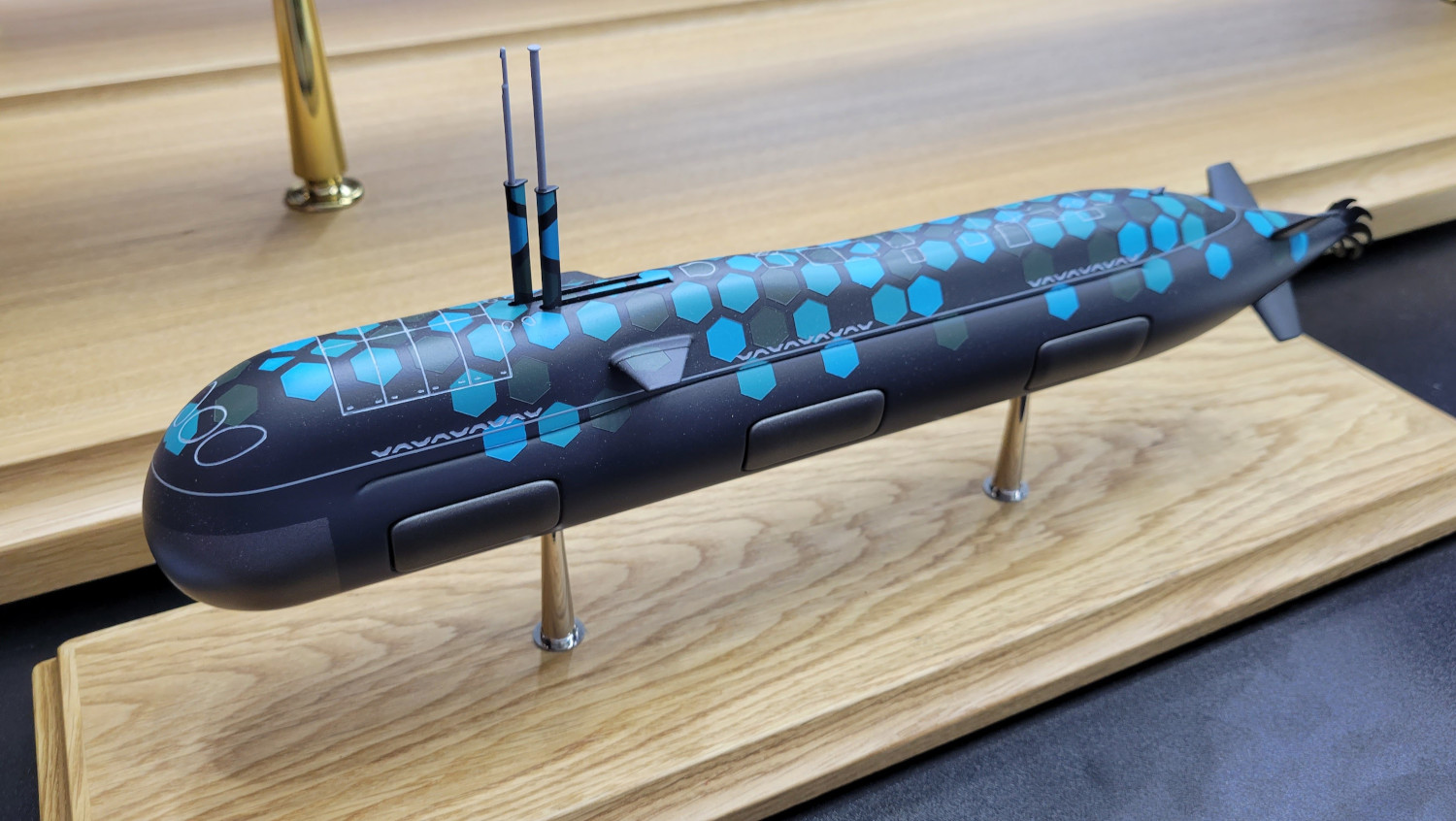
In any discussion of advanced Russian military development efforts, it is always important to point out that the country has a long history of delaying, deferring, and canceling programs due to funding issues. On top of that, the Russian government, especially its defense sector, is now under an especially diverse array of harsh international sanctions as a result of the war in Ukraine. The Kremlin has to pay to keep its war machine running, and is now facing the prospect of having to make serious investments to replenish its conventional forces and rebuild any occupied areas, depending on how the conflict ultimately shakes out.
However, advanced submarine development work is one area where the Kremlin has consistently applied significant resources and produced real results. U.S. military officials are on record in recent years saying that current generation Russian submarines are equivalent or near-equivalent to American types in terms of performance and capabilities, and present real threats even when operating relatively close to U.S. shores. The ultra-quiet nuclear-powered Yasen-M guided missile submarine design has garnered particular attention from authorities in the United States and elsewhere within the NATO alliance.
So, while it remains to be seen whether or not Arktur, or Surrogat-V or Ye-Amur, or anything like them, ultimately become realities, they do seem to very much reflect real capabilities that the Russian Navy is interesting in obtaining in the future.
Contact the author: joe@thedrive.com
